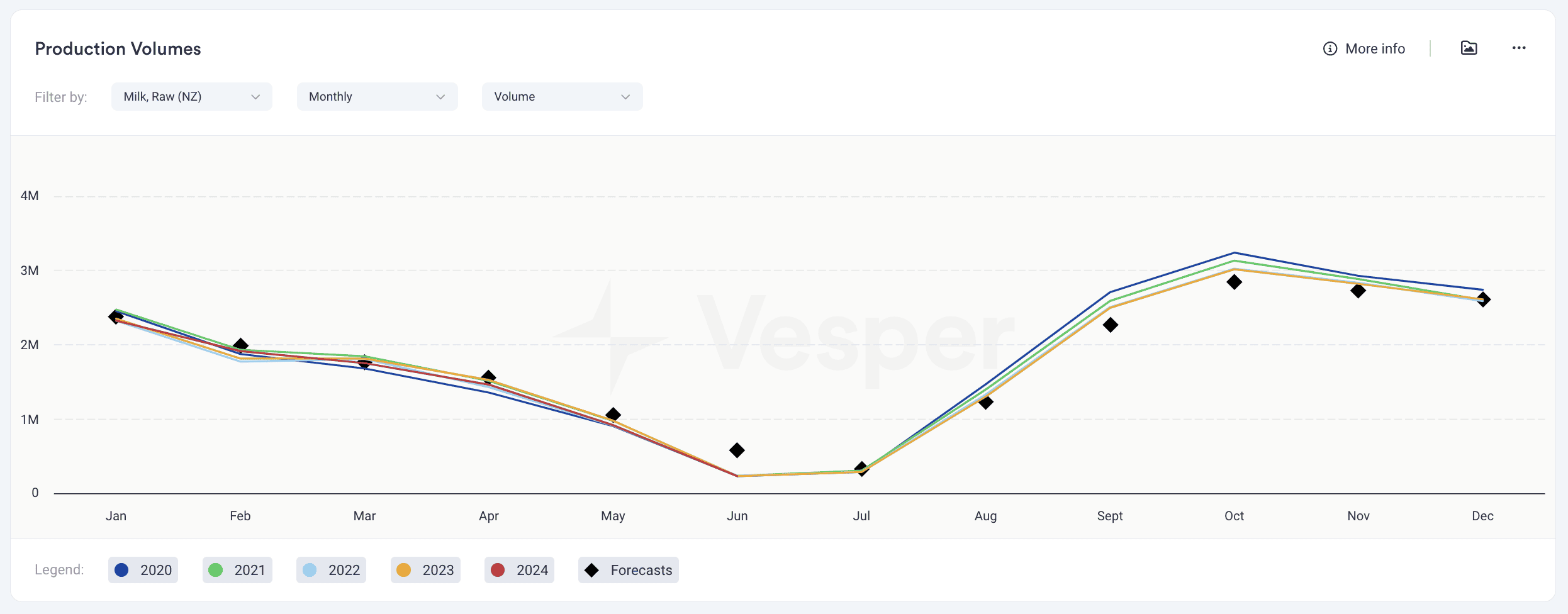Dairy production data is crucial for understanding the dynamics of the dairy market. It allows companies to:
- Anticipate Market Trends: By analysing production data, companies can predict periods of surplus or shortage, helping them adjust their procurement and sales strategies accordingly.
- Optimise Costs: Detailed knowledge of production costs enables companies to source dairy products more cost-effectively.
- Plan for Seasonality: Understanding seasonal production trends allows companies to manage inventory levels more efficiently and plan marketing activities around periods of high production.
Key Dairy Production Data Metrics and Their Significance
To fully leverage dairy production data, FMCG companies must understand the key metrics that drive this data and how they impact business decisions.
Milk Yield per Cow
Milk yield is a fundamental metric that reflects the efficiency and productivity of dairy farming. Variations in milk yield can result from differences in cow breeds, feed quality, and environmental conditions. For example, dairy farms in New Zealand often report higher milk yields due to the favourable climate and abundant pasture, especially during the spring and summer months.
Production Costs
Understanding the costs associated with dairy production is essential for managing profitability. These costs vary widely depending on factors like feed prices, labour costs, and energy consumption. For instance, production costs in regions with higher feed prices or labour rates, such as parts of Western Europe, can significantly impact the final cost of dairy products.
Regional Production Volumes
Regional production volumes provide insight into the supply levels of dairy products in different areas. For example, the United States is one of the largest milk producers globally, with significant production coming from states like California and Wisconsin. Monitoring these volumes helps FMCG companies understand where their supply is coming from and anticipate any regional disruptions that could affect the supply chain.
Seasonality in Dairy Production
Seasonality is a critical factor in dairy production. In regions like the Northern Hemisphere, milk production peaks during the spring, when cows have access to fresh pasture, a phenomenon known as the “spring flush.” Understanding these seasonal trends helps companies plan their procurement and sales strategies effectively, ensuring a consistent supply of dairy products throughout the year.
